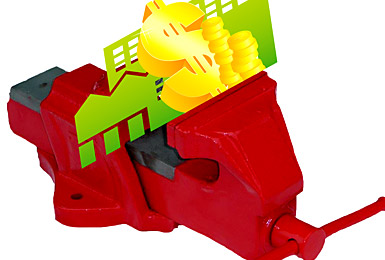Streamlining Best Practices Across Facility Management
Every business can realize significant cost savings by implementing streamlined, automated processes in its daily operations.
Spring 2011

Second-Highest Costs
Real estate typically represents the second-highest costs after human resources (HR) for a company, so streamlining even a small percentage of those expenditures can significantly improve the bottom line. Streamlining a practice lets management organize in order to be more strategic, and allows automation to enhance efficiencies by eliminating tedious, mundane activities.
In other words, once a company's real estate organization establishes streamlined and appropriately automated business processes, it will:
• Speed service delivery,
• Get more accurate performance metrics in real time,
• Be able to more quickly respond to customers, and
• Execute more efficiently overall.
The most appealing part of streamlining and automating is that start-up and follow-through are common-sense. For example, an organization should first examine which services it offers within the entire RE/FM spectrum, from early strategic planning to project management, and operations maintenance to building management. Then, after evaluating the performance of each service component, management should address each discrete process to define a best-practice approach. One caveat: the RE/FM industry does not currently have a governing body defining or setting best practices as fields such as accounting have. Although organizations such as Open Standard for Corporate Real Estate (OSCRE) are beginning to address this deficiency, the phrase "best practice" is essentially up to individual organizations or informed industry consultants to decide.
Working More Consistently, Anywhere
The industry is ripe for this kind of optimization, with many opportunities available to perform tasks consistently among most RE/FM organizations. When examining each service area, determine:
• The requirement of that specific process,
• Who the ultimate customer is,
• The motivation for the customer's plans to use the space,
• How to make the space support the customer's business model, and
• How to make the process support the requirement.
Project Announcements
Kratos Plans Somerset County, Maryland, Production Operations
01/17/2026
CesiumAstro Expands Bee Cave, Texas, Headquarters-Manufacturing Operations
01/16/2026
Johnson & Johnson Expands Wilson County, North Carolina, Production Operations
01/16/2026
Solstice Advanced Materials Expands Chesterfield County, Virginia, Manufacturing Operations
01/16/2026
TransMedics Group Plans Somerville, Massachusetts, Headquarters Operations
01/16/2026
AVAIO Digital Partners Plans Pulaski County, Arkansas, Data Center Operations
01/14/2026
Most Read
-
The Workforce Bottleneck in America’s Manufacturing Revival
Q4 2025
-
Data Centers in 2025: When Power Became the Gatekeeper
Q4 2025
-
Speed Built In—The Real Differentiator for 2026 Site Selection Projects
Q1 2026
-
Preparing for the Next USMCA Shake-Up
Q4 2025
-
Tariff Shockwaves Hit the Industrial Sector
Q4 2025
-
Investors Seek Shelter in Food-Focused Real Estate
Q3 2025
-
The New Industrial Revolution in Biotech
Q4 2025
